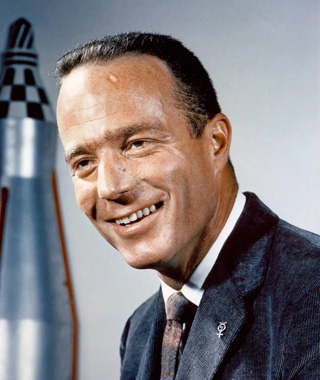When the first U.S. space flight, Mercury-Atlas 6, was launched into Earth orbit in February 1962, Carpenter stood in for pilot John Glenn.
Deke Slayton was first scheduled for the second flight of an American in orbit. However, when he was unable to fly due to heart problems, Carpenter was chosen for this flight. On May 24, 1962, he started the Mercury-Atlas 7 mission in the Aurora 7 spacecraft. After three orbits around the Earth, he landed in the Atlantic, but 400 km away from the recovery ship, so he had to wait several hours for his recovery. He was the only Mercury astronaut who exited the capsule via the exit hatch at the top, as the engineers had originally planned; all other astronauts used the side blast hatch.
His other assignments at NASA included overseeing the development and construction of the Lunar Module for the Apollo program. While on leave from NASA, Carpenter participated in the U.S. Navy’s Sealab II project. During this time, he sustained injuries to his left arm in a motorcycle accident, which impaired his mobility. Despite two surgical interventions (1964 and 1967), he was no longer fit to fly in space. In the summer of 1965 he spent a month in an underwater station at a depth of 60 meters. After returning to NASA, Carpenter used this experience as the person responsible for the astronauts’ underwater training.
In August 1967, Carpenter left NASA permanently and returned to the Navy, where he led the aquanaut operations of the Sealab III project. He left military service in 1969. Carpenter founded the venture company Sear Sciences whose goal was to make better use of marine resources. Here he worked closely with the French oceanographer Jacques-Yves Cousteau. He dived in all oceans, including under the ice of the Arctic Ocean.
Carpenter was married four times, divorced three times and had eight children. He died in October 2013 at the age of 88 in a Denver hospital from complications of a stroke.

